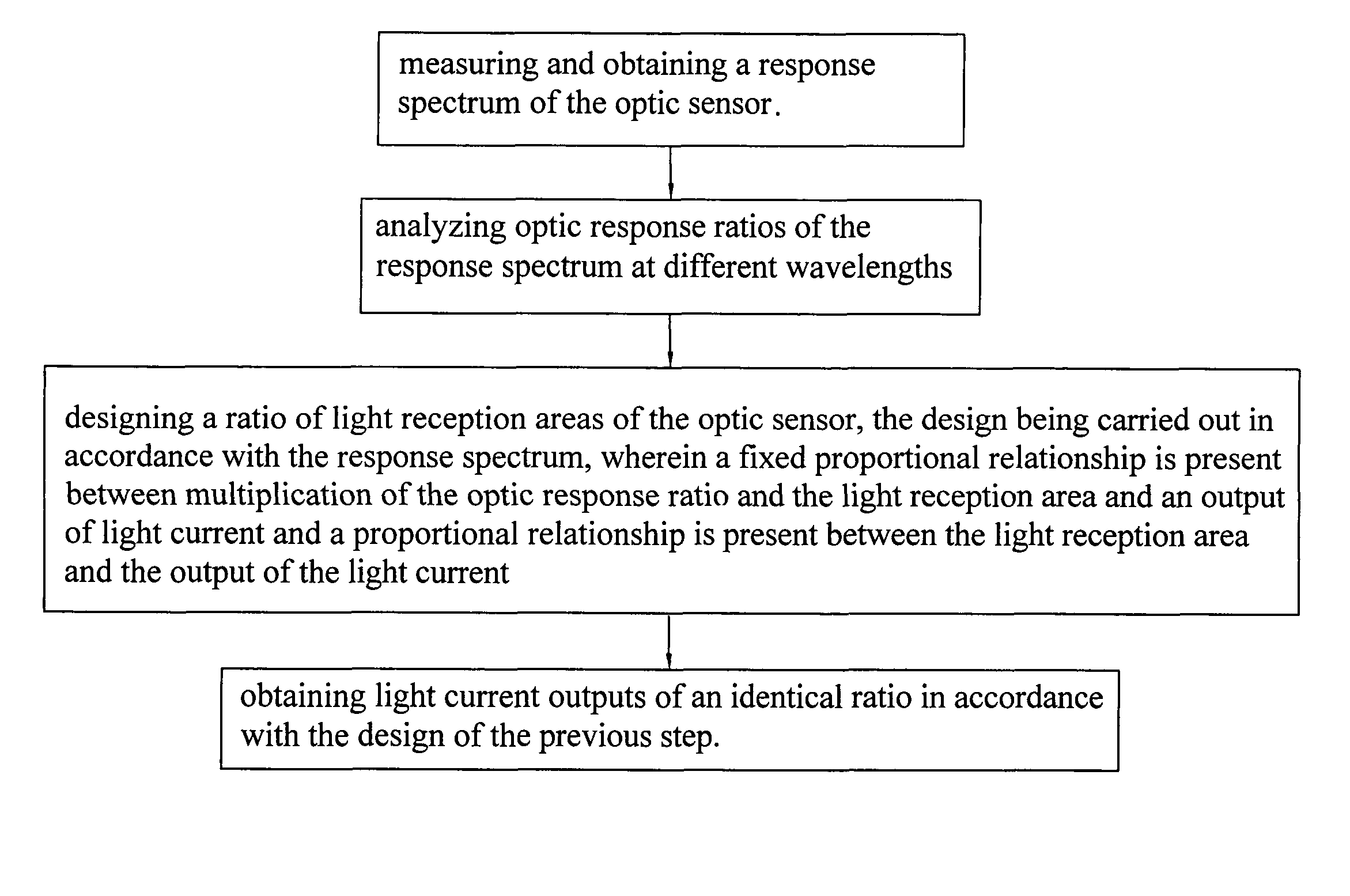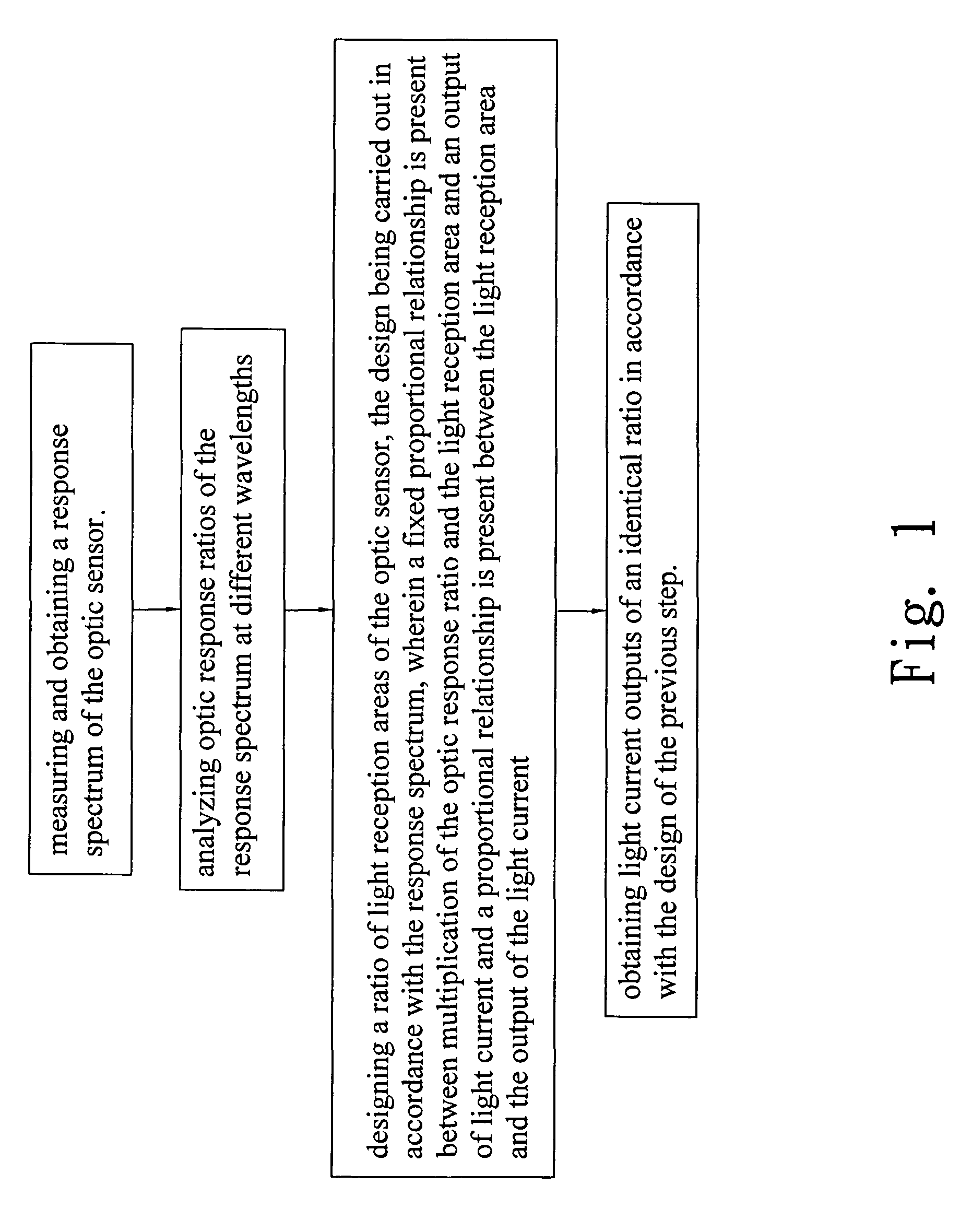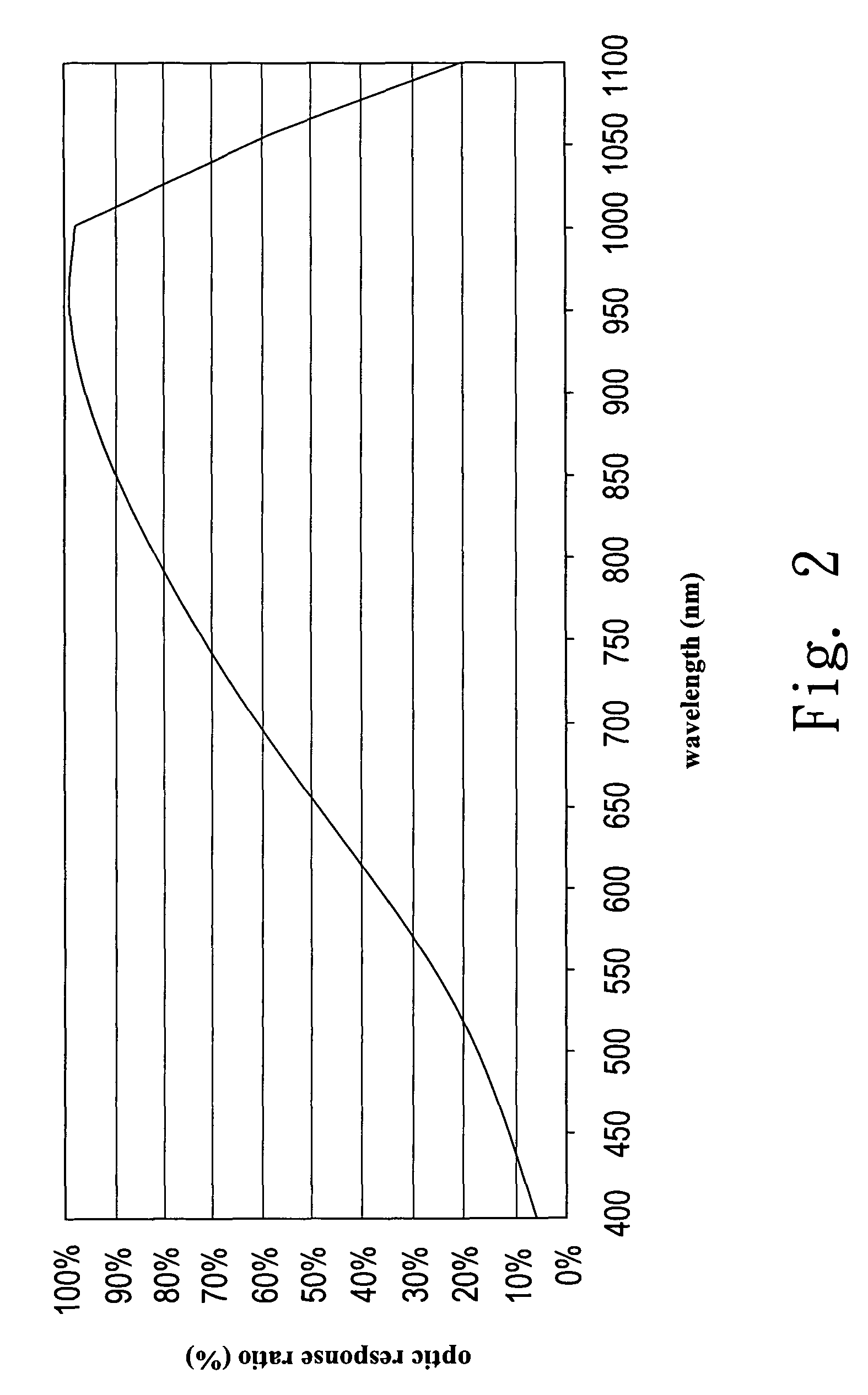Output ratio adjusting method for optic sensor
a technology of output ratio and optic sensor, which is applied in the direction of optical radiation measurement, instruments, spectrometry/spectrophotometry/monochromators, etc., can solve the problems of increased cost and complicated and achieve cost saving and simplified design and use of power amplification circuits.
- Summary
- Abstract
- Description
- Claims
- Application Information
AI Technical Summary
Benefits of technology
Problems solved by technology
Method used
Image
Examples
first embodiment
[0018]The output ratio adjusting method provided in accordance with the first embodiment for an optic sensor will be described first. The optic sensor used here is a sensor for detecting R, G, and B primary colors. The adjusting method comprises the following steps:
[0019](1) Setting the ratio among areas of R, G, B colors to 1:1:1, wherein the optic sensor can be a silicon (Si) made light detective diode (light detective diode of first material);
[0020](2) Obtaining an original ratio among light currents for R, G, B, which is set to X:Y:Z, for the area ratio of R, G, B being 1:1:1;
[0021](3) Obtaining a new ratio among light currents for R, G, B that is 1:1:1; and
[0022](4) Calculating a new ratio among areas of R, G, B, which is 1:X / Y:X / Z, for the new R, G, B light current ratio of 1:1:1.
[0023]For an example where the original R, G, B light current ratio is 16:23:18 under the condition that the R, G, B area ratio is 1:1:1, when the new R, G, B light current ratio is set to 1:1:1, the ...
second embodiment
[0024]Referring to FIGS. 1-5, an output ratio adjusting method in accordance with the present invention for an optic sensor will be described. The optic sensor is a sensor for detecting various wavelengths. The adjusting method comprises the following steps:
[0025](1) Measuring and obtaining a response spectrum (as shown in FIG. 2) for the optic sensor, wherein the optic sensor can be a silicon (Si) made light detective diode (light detective diode of first material), and wherein the axis of abscissa indicates wavelength;
[0026](2) Analyzing optic response ratios of the response spectrum at different wavelengths (see FIG. 3), wherein in the example illustrated, the optic response ratios obtained through the analysis are as follows: the optic response ratio being 6% for wavelength of 400 nm (nanometers); the optic response ratio being 11% for wavelength of 450 nm; . . . ; the optic response ratio being 99% for wavelength of 950 nm; the optic response ratio being 98% for wavelength of 1...
third embodiment
[0029]Referring to FIGS. 6-9, an output ratio adjusting method in accordance with the present invention for an optic sensor will be described. The optic sensor is a sensor for detecting various wavelengths. The adjusting method comprises the following steps:
[0030](1) Measuring and obtaining a response spectrum (as shown in FIG. 6, wherein the axis of abscissa indicates wavelength) for the optic sensor, wherein the optic sensor is a light detective sensor made of GaP, GaAsP, GaAs, InP, InGaAs, AlGaInP, or InGaN (light detective diode of second material), the light detective diode of the second material (or even including the light detective diode of the first material) belonging to ultraviolet (UV) enhance type, infrared (IR) enhance type, blue enhance type, or UV+blue enhance type;
[0031](2) Analyzing optic response ratios of the response spectrum at different wavelengths (as illustrated in FIG. 7), wherein in the example illustrated, the optic response ratios obtained through the an...
PUM
 Login to View More
Login to View More Abstract
Description
Claims
Application Information
 Login to View More
Login to View More - R&D
- Intellectual Property
- Life Sciences
- Materials
- Tech Scout
- Unparalleled Data Quality
- Higher Quality Content
- 60% Fewer Hallucinations
Browse by: Latest US Patents, China's latest patents, Technical Efficacy Thesaurus, Application Domain, Technology Topic, Popular Technical Reports.
© 2025 PatSnap. All rights reserved.Legal|Privacy policy|Modern Slavery Act Transparency Statement|Sitemap|About US| Contact US: help@patsnap.com



